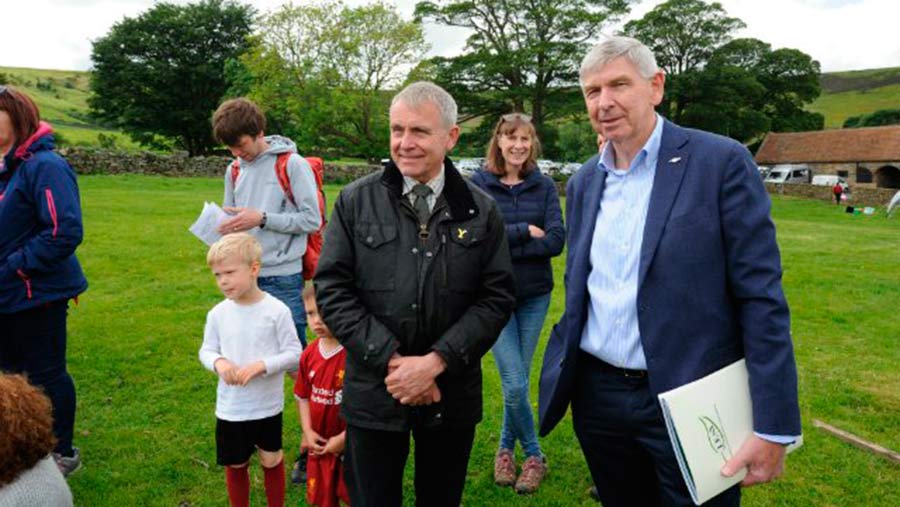Minister thanks British farmers on Open Farm Sunday visit
 Robert Goodwill (centre) visited an Open Farm Sunday event in North Yorkshire © Defra
Robert Goodwill (centre) visited an Open Farm Sunday event in North Yorkshire © Defra Farm minister Robert Goodwill has thrown his support behind this year’s Open Farm Sunday (OFS).
Mr Goodwill enjoyed his visit to Stonebeck Gate Farm in North Yorkshire on 9 June. “Open Farm Sunday is a fantastic initiative, getting more people out into the countryside to see where our food comes from and meet the farmers who produce it,” he said.
Organised by Linking Environment and Farming (Leaf), the 14th Open Farm Sunday saw more than 350 farms open their gates to the public.
See also: Open Farm Sunday first-timers share their experiences
Mr Goodwill thanked all farmers who took part in the event, saying they were “producing the food we eat, protecting wildlife and providing access to the beautiful countryside.”
More than 25% of farmers who held an OFS event this year were doing so for the first time.
https://twitter.com/PeterDevonUK/status/1137750852058435585
Completely transfixed of the Pygmy goat! Favourite picture from @OpenFarmSunday #OpenFarmSunday pic.twitter.com/T0K1nxZqTR
— Colin Ferguson (@sw_farmer) June 9, 2019
Very busy day at the #OpenFarmSunday at #hopefarm Helping out with trailer rides and taking to the public about how we farm with nature. Also have a @NFFNUK stand signing up lots of new members for the Network pic.twitter.com/dXaSlZDm5V
— Martin Lines (@LinesMartin) June 9, 2019
At Hartpury College’s Home Farm in Gloucestershire visitors were able to watch a sheep shearing demonstration, meet various animals, enjoy tractor rides and more.
“We’re proud to be one of the farms taking part in this nationwide RSPCA-assured event,” said farm manager Andrew Eastabrook.
Since it was launched in 2006, Open Farm Sunday has attracted more than 2.2 million visitors to farms. It aims to connect the public with where their food is produced and the work that farmers do to protect the environment.
Next year’s Open Farm Sunday will take place on 7 June.
Thank you all once again for making #OpenFarmSunday such a big success. The best news…we’ll be doing it all again next year ? pic.twitter.com/cat31x7Pbm
— OpenFarmSunday (@OpenFarmSunday) June 9, 2019
Top tips for opening your farm to the public
To organise a safe and successful farm event, the Health and Safety Executive has outlined some key steps to follow:
- Outline risks on site, eg animal-human cross-infection risks.
- Provide information for visitors on the risks and control measures, such as hand washing to prevent severe infection and illnesses from animals.
- Provide hand washing facilities and encourage visitors to use them, with adequate direction on how to wash hands after petting animals.
- Set up separate eating/picnic areas, with hand-washing facilities nearby.
- Reduce visitor exposure to other risks by, for example, fencing off high-risk areas.
